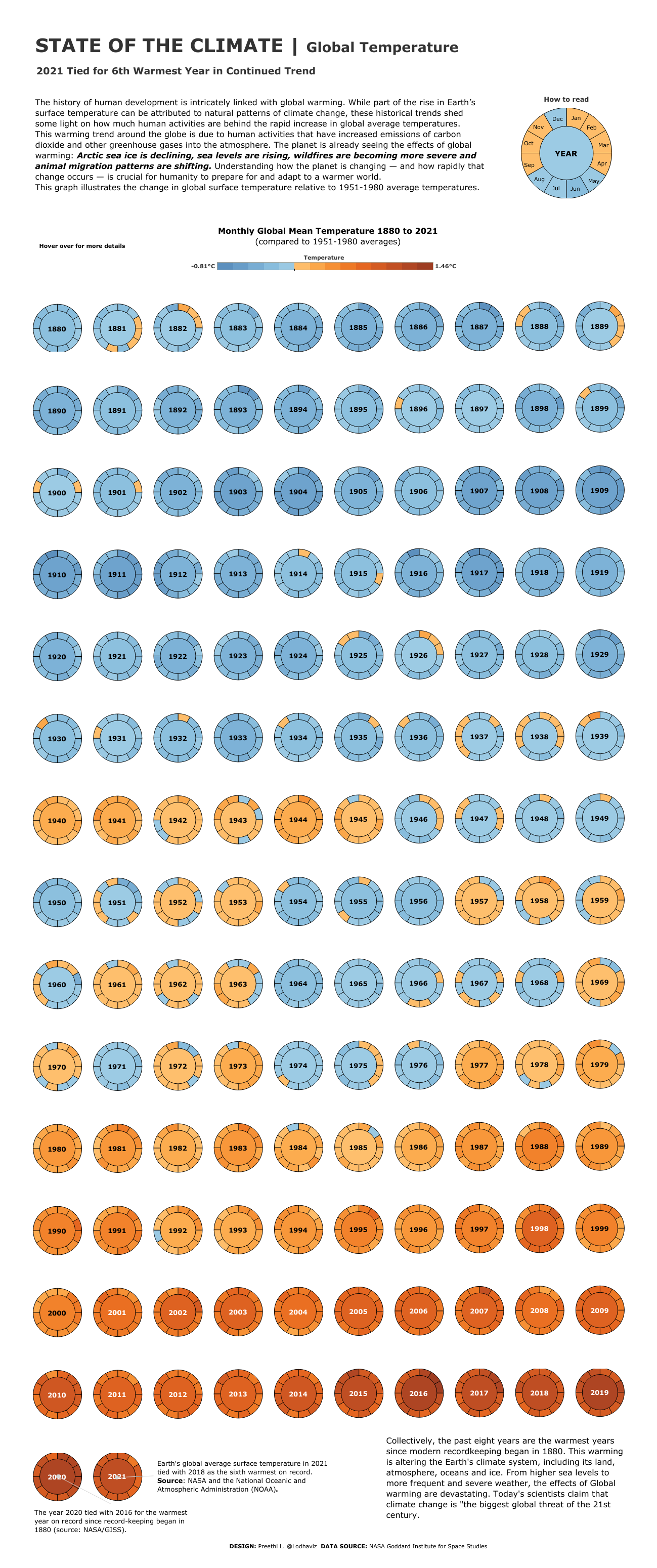Timelines
New Timeline Shows Average Global Temperatures for Every Month From 1880 Through 2021
The subject of climate change is one that continues to be heavily debated, and with good reason. From the NASA Goddard Institute for Space Studies, here is a visual representation of the monthly global mean temperature, spanning from 1880 through 2021. The visual is laid out where the each year can be read as a clock, in terms of the months going clockwise, along with colors to indicate their average temperatures during those times of the year.
Did you know that since 1880, when modern record-keeping began, that the last eight years have been the warmest? Earth’s climate system is being altered by this consistent warming, and we’re seeing that the effects of Global Warming and becoming verse than ever before.
Climate change is will undoubtedly affect every country in the world, however it will hit some countries much harder than others. Six places from around the world that will prove to be especially vulnerable in regards to the impending impacts of climate change include Haiti, Nigeria, Yemen, Manila, Kiribati, and United Arab Emirates. They will all face changes for one reason or another, however all are scary.
In United Arab Emirates, for example, the sea levels have continued to race at an uncomfortable pace, and are at risk of facing water stress, which puts pressure on the UAE to spend much more energy and resources than they currently are on cooling.
According to the visual, and per NASA and the National Oceanic and Atmospheric Administration (NOAA), the global average surface temperature on Earth just last year in 2021 was tied with 2018 as being the sixth warmest year on record during that span. According to scientists around the globe today, the the climate change that we’re experiencing here on Earth is being referred to as “the biggest global threat of the 21st century.”
Charts
Timeline Displays Average U.S. Internet Speeds Over Time
In 1993, when the Internet became publicly available, the average speed was 14.4 Kb/s, and today, the average speed is 214 Mb/s. These are huge leaps in speed that can be difficult to understand. The team at Ooma shows the progression of this leap with a timeline of Internet speeds year by year. Tracking these Internet speeds can help us understand the technological developments that made this possible and show how the Internet has proliferated in daily life.
Click below to zoom.
At the top of the timeline, we see Internet speeds throughout the ‘90s at their slowest. Internet users had dial-up modems using phone lines to connect to the web. This was the slowest version of Internet technology we have seen on the timeline. The team provides context for the speed, explaining it would take almost four seconds to download an image of a meme, 11 minutes and 41 seconds to download an MP3 file of a song, and almost 34 hours to download the film, “The Dark Knight.” The peak speed reached in the dial-up era was 44.3 Kb/s. The graph shows significant jumps in speed in 1999, 2005, 2014, and 2022. These jumps occurred mainly due to technological advances, such as the creation of broadband and satellite Internet, as well as the expansion of access to higher speeds.
Context for today’s speeds compared to the past shows that it takes less than a second to download a meme, half a second to download an MP3, and only 8 seconds to download a long movie like “The Dark Knight.” Even though there have been vast improvements, the United States doesn’t have the fastest Internet speeds in the world. Singapore and the United Arab Emirates have higher speeds. The team tells us this is because of America’s vast landmass. It has been a challenge to provide high-speed Internet to rural areas, but there have been big improvements. Thanks to satellite Internet connections, people in more remote areas can have access to higher speeds.
Current projections show that by 2025, most of the world will have Internet access, even in remote areas with less infrastructure. The best equipment will be able to download a terabyte of data in just seconds through the use of fiber-optic cables, which are much faster than coaxial cables.
While there’s been great progress in providing high-speed Internet to rural areas, millions of Americans still don’t have access to high-speed Internet. The challenge is how to connect these locations to broadband. There are countless ways we have seen the Internet improve quality of life for people, from bringing them the ability to use telehealth, to social connections, to remote work opportunities. Timelines like this one from Ooma highlight progress but also remind us of the work that still needs to be done to improve American infrastructure. When we’ve seen such huge leaps in speeds, it’s not fair for some people to lack access to reliable Internet because of where they live.
Business Visualizations
Chart Visualizes the Price of the Ford Mustang Every Year Since Debut
The Ford Mustang is a legendary American muscle car that symbolizes the culture of open-road freedom. The Ford Motor Company designed the vehicle to embody the European sports car, but with a price point that’s more attainable for middle-class Americans. The idea was a massive success. The first Mustang debuted in 1964, and the Mustang enjoys a legacy and loyal fans to this day. The team at Speedway Motors celebrates the Mustang with an illustrated graphic depicting each Mustang iteration, along with the price at release and the price adjusted for inflation.
Click below to zoom.
Through this detailed and illustrated chart, we can see the evolution of this vehicle. The first Mustang Hardtop was priced at $2,368, which is $24,3444 in today’s market, emphasizing its affordability in the world of muscle cars. While the Mustang was a gamble, it proved to be a phenomenon and sold over 100,000 cars in its first four months. The Mustangs’ popularity persisted throughout the ‘60s, and Ford focused on improved performance and power, which meant prices rose. This trend continued until the early ‘70s gas crisis when Ford had to adjust to new consumer demands for better fuel mileage. They designed the Mustang II with a smaller chassis and less muscle to adjust to the changes in the economy.
The Mustang’s popularity hit a dip in the early ‘80s, and the Camaro almost outsold it. Ford innovated and adjusted again with the release of the Fox Mustang, designed to be versatile as a day-to-day muscle car. As technology advanced into the ‘90s, Ford introduced popular new features like a V8 engine and SN-95 chassis, which we can see featured in the Mustang GT.
Today’s Mustang is loaded with the most innovative features, designed for performance and comfort. The current model is the Dark Horse Premium, which sells for $69,375. While it’s a flashy and popular car, it lacks some of the performance boosts of past models, yet the price is high.
The Mustangs’ prices have risen a lot over the decades, for several key reasons besides inflation. First, safety standards have increased with innovative technology making drivers safer. Some safety features are required, while others are sought-after bonuses that drivers are looking for. A key aspect of a muscle car is the power and performance. Modern technology advances the performance of the vehicle, but that engineering comes at a higher price point. Material costs have advanced as well, from labor to raw materials. Cars, in general, are now more expensive to build.
The team’s chart is a true testament to the power of visual data. Through the images and price points, we can see changes in the Mustang reflecting cultural and economic shifts, creating a fascinating timeline of an icon among automobiles. Do you have a favorite Mustang model? What do you think about the price changes over time?
Business Visualizations
Billionaires Who Built Up from Small Businesses
The world of entrepreneurship loves the tale of a small business startup that grew into a billion-dollar business. The team at Ooma illustrated the biggest names in this world of billionaires with a timeline showing how long it took them to reach their status from a small business start-up to a billion-dollar milestone.
Click below to zoom.
The graphic features 28 billionaires who built up from a small business. All names were pulled from the Forbes 400 list. While the graphic is stuffed full of details, the most fascinating is the measure of how many years they needed to become billionaires.
The first person to achieve the “self-made” billionaire status was John D. Rockefeller in 1916. The oil tycoon rode the wave of the industrial era to billionaire status. Today, there are almost 3,000 billionaires worldwide. The U.S. is home to the highest number, at 813 billionaires. We can see an industry trend in this graphic, which is that tech dominates. This is no surprise. As Rockefeller benefited from the need for oil, how we worked and what we produced changed completely, and tech has changed every aspect of our lives, so it’s no surprise that these entrepreneurs have reaped the rewards.
Notable examples are Bill Gates, founder of Microsoft, who led the way in introducing the personal computer to the general public. Warren Buffett took a different approach. He grew wealth by investing wisely in assets. Elon Musk started his first business with Zip2 in the early days of the Internet.
The Billionaire Journeys
The chart shows us that it took different people vastly different amounts of time to reach their status. Bezos and Zuckerberg were the fastest, becoming billionaires in just four years. Others like Donald Bern and John Menard Jr. had a slow build that took 43 years. Many people land somewhere in between these extremes, emphasizing that successful entrepreneurship takes dedication and persistence. We also see on that chart that there is only one woman, Diane Hendricks. This suggests that entrepreneurship and business are still rife with bias.
The Journeys of the Top 10 Billionaires
This is how long the wealthiest billionaires took to hit their status:
- Jeff Bezos: 4 years
- Mark Zuckerberg: 4 years
- Jan Koum: 5 years
- Larry Page: 6 years
- Sergey Brin: 6 years
- Henry Samueli: 9 years
- Bill Gates: 12 years
- Michael Dell: 12 years
- Steve Cohen: 12 years
- David Tepper: 13 years
Many people on this list transformed their industries, showing that successful entrepreneurs are creative and innovative. They show us that entrepreneurs should look for emerging trends in their industry, leverage new technology, and make strong investments. While a lot depends on love, it’s clear that persistence is key. The list gives us an idea of what kind of industries people can generate billion-dollar businesses in and how long it might take to get there. This chart is a great introduction to these business pioneers, and many of these billionaires have published books and given out advice on how they made their businesses a success.
-
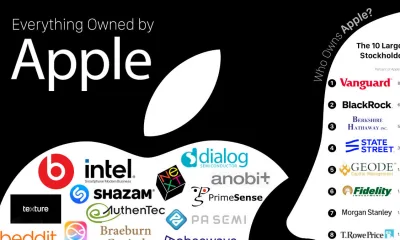
 Business Visualizations9 months ago
Business Visualizations9 months agoEverything Owned by Apple
-
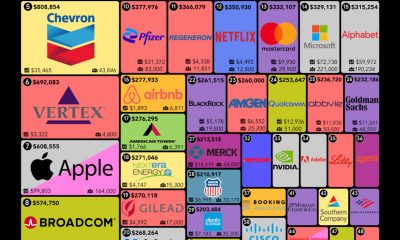
 Business Visualizations8 months ago
Business Visualizations8 months agoAmerica’s Most Valuable Companies Ranked by Profit per Employee
-
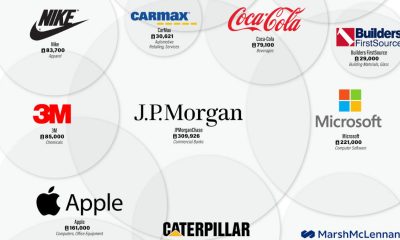
 Business Visualizations2 months ago
Business Visualizations2 months agoThe Biggest Employers by Industry
-
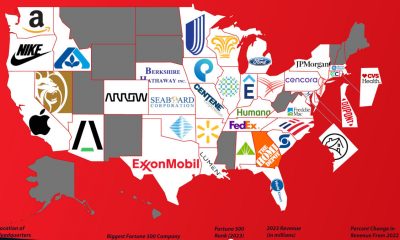
 Business Visualizations4 months ago
Business Visualizations4 months agoThe Biggest Fortune 500 Company in Every State
-
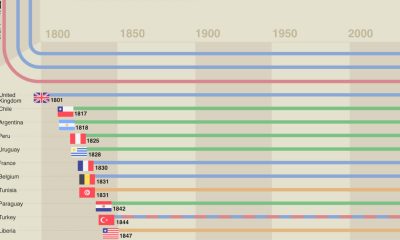
 Timelines1 year ago
Timelines1 year agoA History of the Oldest Flags in the World
-
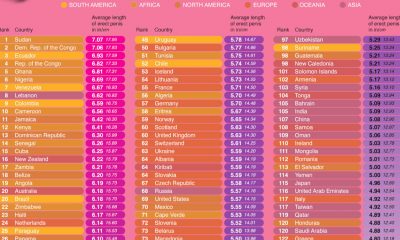
 Maps1 year ago
Maps1 year agoPenis Lengths Around the World
-
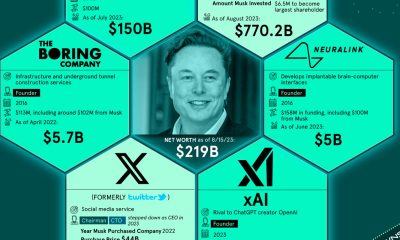
 Business Visualizations2 years ago
Business Visualizations2 years agoHow Many Companies Does Elon Musk Own?
-
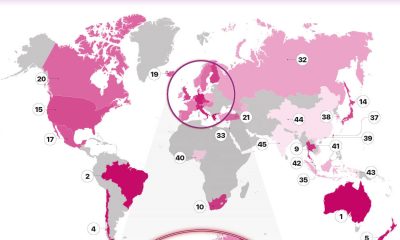
 Charts2 years ago
Charts2 years agoThe Most Promiscuous Countries in the World

